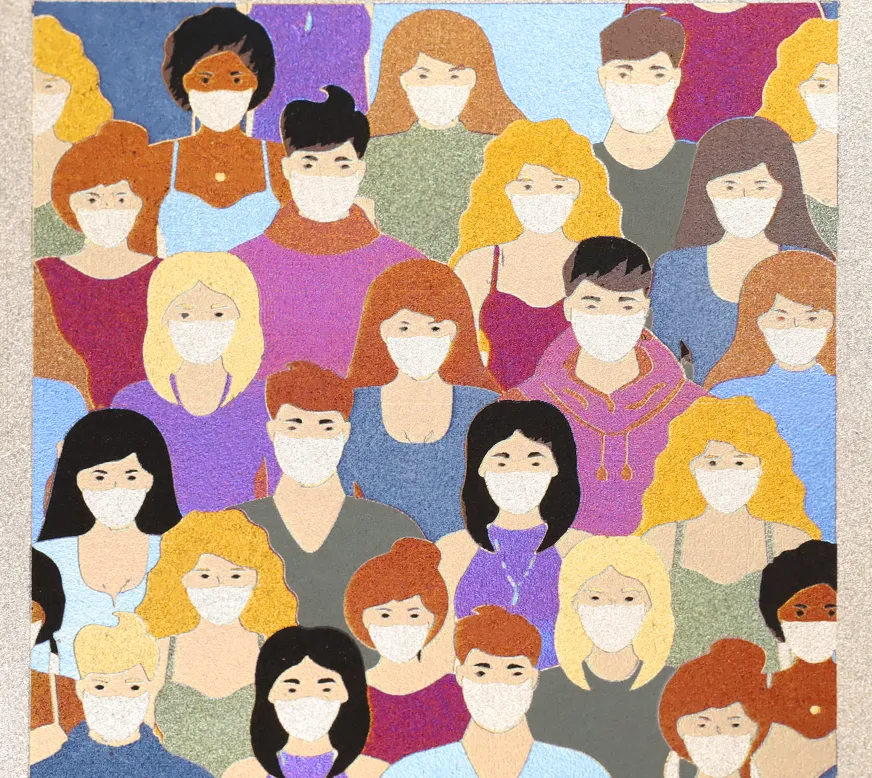Scientists Use Laser Paintbrush to Craft Mini Version of van Gogh’s ‘Starry Night’
The colorful “brushstrokes” are “reversible, rewritable [and] erasable,” says scholar Galina Odintsova
/https://tf-cmsv2-smithsonianmag-media.s3.amazonaws.com/filer/54/40/5440bce3-c8d5-4167-9018-0ec905f66072/optica_420074_starry_night.jpeg)
Vincent van Gogh’s The Starry Night (1889) has long captivated viewers with its fluid swirls of yellow, blue and white. Now, scholars have recreated the iconic Impressionist painting with the help of an unexpected tool: lasers.
As Jennifer Ouellette reports for Ars Technica, researchers at ITMO University in St. Petersburg, Russia, developed a “laser paintbrush” that applies color to metal canvases. The technique is so versatile that artists can easily alter, erase or reapply their “brushstrokes.” The team published its findings in the May issue of the journal Optica.
“We developed a way to use a laser to create localized color on a metallic canvas using a technique that heats the metal to the point where it evaporates,” says lead author Vadim Veiko in a statement. “With this approach, an artist can create miniature art that conveys complex meaning not only through shape and color but also through various laser-induced microstructures on the surface.”
Per the study, the scientists used their method to create a 3- by 2-centimeter version of Starry Night in just four minutes. They also replicated one of van Gogh’s famous self-portraits and made an entirely original artwork.
/https://tf-cmsv2-smithsonianmag-media.s3.amazonaws.com/filer/64/c3/64c3c475-51ff-4fa2-ad68-2ecf01570831/getimage.jpeg)
The new technique builds on team members’ previous research, including a 2016 paper that detailed different ways to add color to titanium and stainless steel surfaces. After conducting this study, the researchers realized that they needed to devise a way of more easily manipulating colors applied to a metallic canvas.
“We wanted to do more than offer a wide palette of stable colors,” says co-author Galina Odintsova in the statement. “Thus, we worked to create a convenient tool for applying them more like an artist’s brush.”
For this latest study, the experts heated metal until it began to evaporate. When the material cooled, a thin layer of the solid catalyst metal oxide formed. Light, in the form of the laser paintbrush, bounced off of this metal oxide film, producing a spectrum of nine colors.
“Depending on the thickness of such films, waves with different wavelengths interfere, so we can see different colors,” co-author Yaroslava Andreeva tells Ars Technica.
As Odintsova notes in the statement, the new technique “makes our color strokes reversible, rewritable, erasable and much more efficient.”
Overall, the marking process is around ten times faster than previous iterations.

Crucially, the team found that its laser artworks proved durable when exposed to harsh environments and chemicals. They also don’t require special storage. Eventually, the scholars hope to create a smaller, portable version of the tool (like a paintbrush or a pen) that artists can use to make images on metals or metallic foils.
This isn’t the first time that scientists have used unexpected tools to create miniature artistic masterpieces: In 2018, for instance, Italian researchers transformed light-reactive E. coli bacteria into a millimetric version of Leonardo da Vinci’s Mona Lisa, as Ryan F. Mandelbaum reported for Gizmodo at the time. More recently, “agar art,” which mixes microorganisms with agar, a jelly-like substance extracted from seaweed, to produce pint-sized illustrations, has emerged as a popular trend.
“I got the idea to paint on agar from seeing all the colorful colonies we isolated as part of a science fair demonstration in 2005,” Frederik Hammes, a microbiologist at the Swiss Federal Institute of Aquatic Science and Technology, told Smithsonian magazine’s Meenakshi J earlier this year. “The first design I tried was van Gogh’s sunflowers, as his colors and broad style strokes suited with the working of bacteria on agar.”
Experts are also finding new ways to meld lasers with art. Last year, a group of researchers from Penn State University used a laser-based technique to analyze Impressionist-style paintings. Per a statement, the tool can help create detailed 3-D reconstructions of famous artworks, enabling visually impaired people to experience how van Gogh applied paint or how Georges Seurat added tiny dots to his Pointillist canvases.
/https://tf-cmsv2-smithsonianmag-media.s3.amazonaws.com/accounts/headshot/Isis_Davis-Marks_thumbnail.png)
/https://tf-cmsv2-smithsonianmag-media.s3.amazonaws.com/accounts/headshot/Isis_Davis-Marks_thumbnail.png)